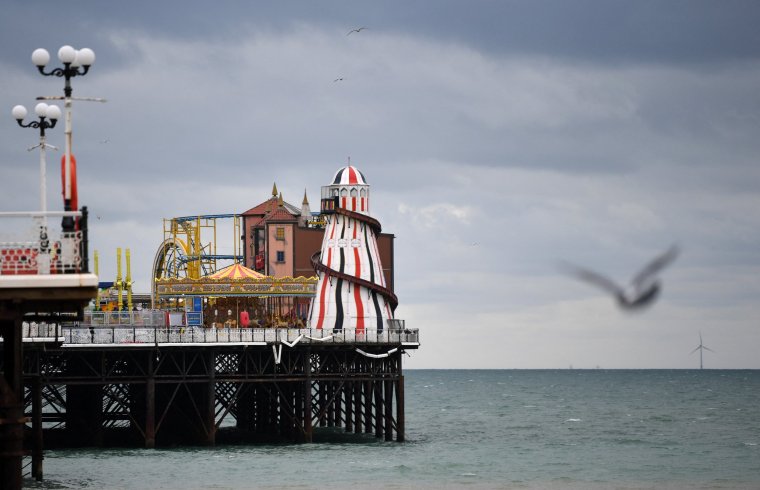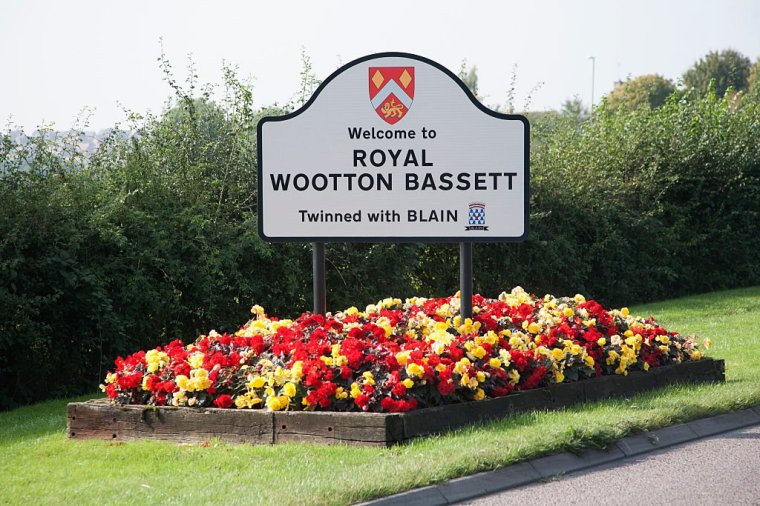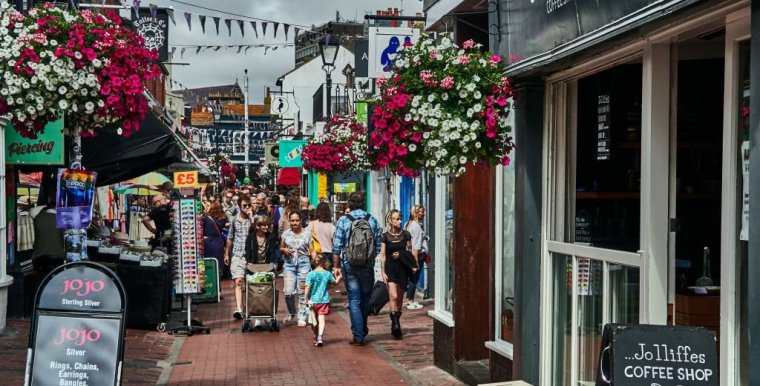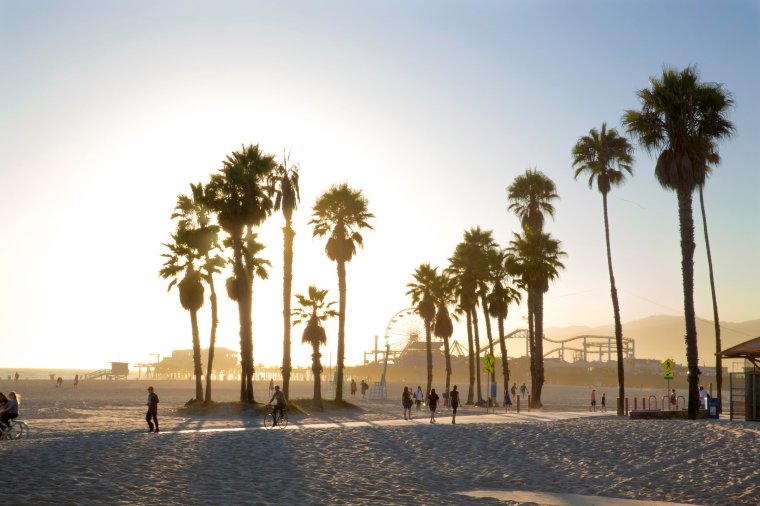It’s Friday morning in Los Angeles and I’m enjoying the warm Californian sun on my face. I’m up on the bluffs above Highway One watching the Pacific Ocean brushing the endless sweep of sand below me. Towering California palms wave in the breeze against a backdrop of royal blue. A dark-metallic Ford Mustang cruises close by blasting out blues guitar. Behind the wheel – I want to believe – is Lenny Kravitz.
This is downtown Santa Monica after all. This trendy coastal city is part of the so-called Silicon Beach strip where Universal Music, Snapchat, Headspace and Hulu are headquartered. It’s also my hometown Brighton’s new twin, where celeb sightings are commonplace and restaurant websites advertise paparazzi-free seating areas.
Brighton and Hove’s mayor, Lizzie Deane, and her Santa Monica counterpart Kristin McCowan signed a Friendship Cities Agreement at the end of July. A spokesperson for Visit Brighton told me that they hope that the partnership “will boost tourism between our two cities by raising awareness of our destinations.”
LA-based artist Ruben Rojas created a street art mural to mark the new relationship, which was unveiled on Brighton’s Palace Pier when the agreement was signed, while several more Santa Monica creatives brought their artistic flair to the Sussex city as part of a series of summer events.

I was curious to know what could be similar about quaint, pebbly Brighton and cool, sun-kissed-and-sandy Santa Monica.
My initial thoughts were of Sheryl Crow crooning about Santa Monica Boulevard, dive bars and bottles of Bud in her 1993 hit “All I Wanna Do”. However, talk of Brighton’s new twin town – or sister city as they say across the Pond – was creating a buzz, proving the business of twinning towns works to build relationships.
The first record of a twin town partnership goes as far back as the ninth century, between the cities of Paderborn in western Germany, and Le Mans in north-western France. They were joined by Saint Liborius, a Catholic priest born in Paderborn and resident of Le Mans until he died, when his ashes were carried 800km back home.
The modern concept was born as an act of peace and reconciliation after the First World War. The first agreement was signed by the towns of Keighley in Bradford and Poix-du-Nord in northern France. It was initiated by soldiers stationed in France who witnessed the devastation to the town and urged the British to raise funds to build a community centre – named after Keighley and still there today.

The movement gained momentum in 1956 when US president, Dwight D Eisenhower, created a US non-profit called Sister Cities International to promote prosperity and peace through cultural and trade exchange. With thousands of members across the globe, it even helps single towns and cities find a partner.
Most towns twin over a common bond, some obvious, and others less so. It could be a name, a similarity in size and demographics, a shared history, related industries like wine or gastronomy, trade relationships, tourism opportunities, or cultural links.
Some places are clearly made for each other, like Beverly Hills and Cannes. Sonoma, California, and Chambolle-Musigny, France, are joined by their fine wine; Agra and Petra by their wonders of the world, the Taj Mahal and Petra.
There’s also Boring in Oregon and Dull in Scotland, which went on to form a trio with Bland in Australia. William Bland and William Boring were residents of their respective towns, while Dull is said to be named after an ancient Roman word for field.
More on USA Travel
It’s also not uncommon to have more than one partner: Los Angeles has 25, Barcelona 22 and San Francisco 20. Saint Petersburg had a record-beating 63, until its partners began severing ties after Russia’s invasion of Ukraine.
Back to Santa Monica, which was already sisters with Hamm in Germany, Fujinomiya in Japan and Mazatlan in Mexico. So why then, Brighton? “When we choose a ‘sister city’, we look for cities with some commonalities, and in this case, Brighton and Santa Monica are both coastal resort cities, progressive, and have ‘sister’ piers,” says Jeff Jarow, president of the Santa Monica Sister Association. Brighton’s Palace Pier opened in 1899, 10 years before Santa Monica’s.
“As an idea, it came up several years ago, between pier directors,” says Jarow. “The process usually takes several months to a year and involves a lot of meetings to discuss which direction we would like to take the friendship.
To avoid hurdles, it’s important to find people in both cities that are passionate, and creative, and will stick with it for several years.”

Sylvia, a long-time local who studied at UCLA in the 1960s tells me Santa Monica was once a sleepy beach town that students considered boring. Brighton was once a simple fishing village.
Both Brighton and Santa Monica are now unrecognisably busy and booming world-class coastal resorts, each at the end of a motorway (Route 66 and the A23). Both historic piers have been featured on screen, Santa Monica’s in Forrest Gump, and Brighton’s in the 90s mod movie Quadrophenia.
Santa Monica’s answer to the mainstream retail hub of Churchill Square is the Third Street Promenade, which holds a buzzy, twice-weekly farmers’ market. The bohemian North Laine is not unlike sleek Montana Avenue with its independent shops and cafes. On a slow stroll, I bookmark Father’s Office, an inviting little burger restaurant, and the Aero Theatre, dating back to the 40s, before losing myself in the lifestyle store, Burro, which is filled with all things South California: coffee table books celebrating surfing and the art of the American West, flannel checked shirts, 1970s-style kaftans, denim shorts and Mexican beach blankets.

Half a block from Santa Monica Pier is the diminutive roadside bar-steakhouse Chez Jay, a Historic Landmark. It has been “serving locals, celebrities and visitors since 1959” and looks little changed since, from its original neon sign to its red leather booths and gingham tablecloths.
I don’t see any celebrities – or a Bill or Billy or Mac or Buddy for that matter – but I’d be happy to stay here with a Bud until the sun comes up.
One thing’s for sure, Brighton can’t match Santa Monica’s year-round sunshine, but I have a new appreciation for its Regency elegance, quirkiness and cosy pubs.
Travel essentials
Getting there
Virgin Atlantic flies from Heathrow to Los Angeles.Staying there
Palihouse Santa Monica has doubles from $340 (£300)
Proper Hotel Santa Monica has doubles from $449 (£400)Visiting there
Chez JayMore information
santamonicalovesbrighton.com
santamonica.com
visitbrighton.com

Grindr must act but there are darker reasons why children are on the dating app